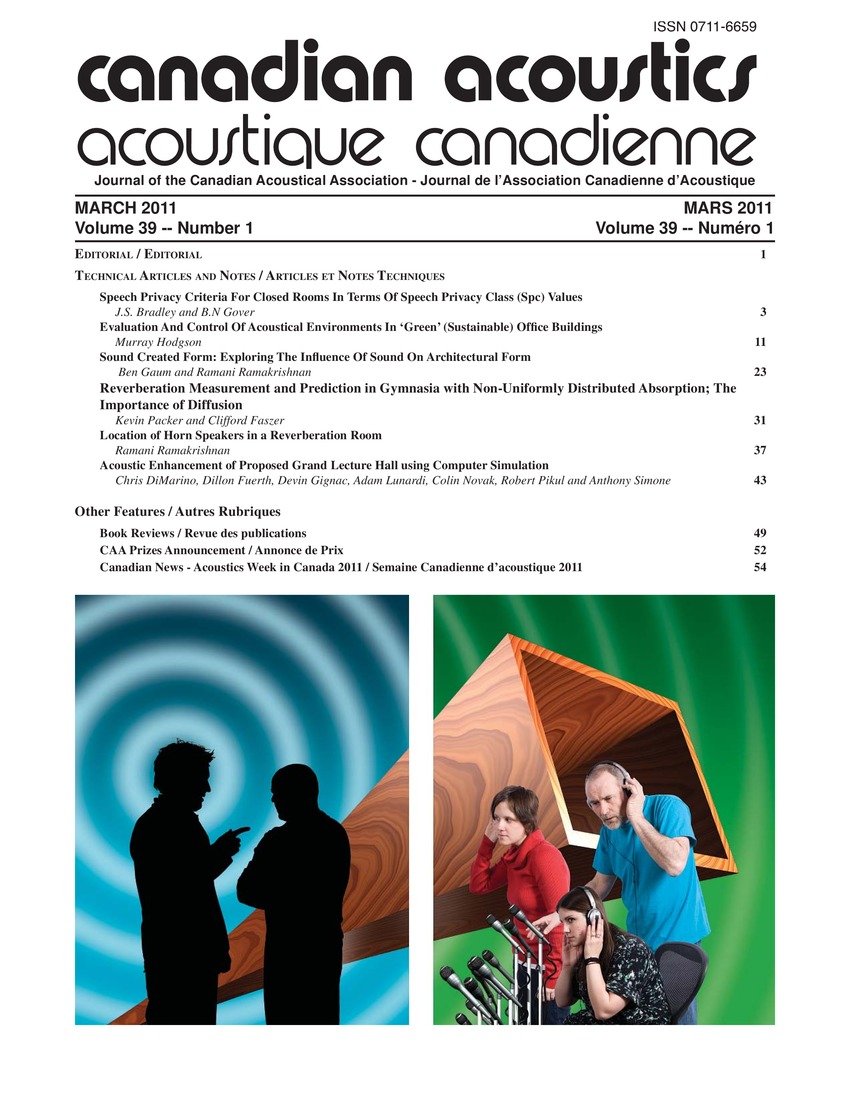Sound created form: Exploring the influence of sound on architectural form
Keywords:
Acoustic properties, Solar buildings, Acoustical analysis, Acoustical parameters, Building envelopes, Current projects, Dimensional representation, Formal design, Musical performance, Performance spaces, Schematic design, Visual representations, Wav-fileAbstract
The Montreal Jazz Festival is one of the largest and the most important jazz festivals in the world. The festival lacks a proper central location for operations. The current project has explored the influence of sound on architectural form and the aural quality of spaces it can create, by designing a new "Maison du Festival." The original schematic design of the building called for two "amphitheatred" sections of the plan allowing for performances on the two main stages to be projected onto the building itself, essentially acting in the same way as the back of a traditional amphitheatre. The overall form of the building was mainly derived from taking various wav file recordings of the streets surrounding the proposed site and then converting those files into a three dimensional representation. This was achieved by using a software called soundplot 1.0™ to capture the wav files that were then generated into 3D form in Rhino. Several recordings of each street were taken at various times of the day both during and after the festival to obtain a visual representation of the types of sounds that were directly affecting the proposed site. Three dimensional 'strips' were then selected from the hundreds of forms generated that would most accurately match the proposed schematic formal design and provide the "amphitheatred" sections required. A uniform building envelope was created from the wav file strips. This building envelope was then analyzed using CATT Acoustics to test the acoustic properties of the buildings form. The results of CATT Acoustics as well as the information gathered from previous studies of outdoor performance spaces were used to alter that the form of the original building in order to satisfy desired acoustical parameters that were required for the musical performances. The CATT Acoustics software proved instrumental in providing the acoustical analysis information that would help accurately transform the buildings form to properly satisfy the acoustical requirements of the festival organizers.Additional Files
Published
How to Cite
Issue
Section
License
Author Licensing Addendum
This Licensing Addendum ("Addendum") is entered into between the undersigned Author(s) and Canadian Acoustics journal published by the Canadian Acoustical Association (hereinafter referred to as the "Publisher"). The Author(s) and the Publisher agree as follows:
-
Retained Rights: The Author(s) retain(s) the following rights:
- The right to reproduce, distribute, and publicly display the Work on the Author's personal website or the website of the Author's institution.
- The right to use the Work in the Author's teaching activities and presentations.
- The right to include the Work in a compilation for the Author's personal use, not for sale.
-
Grant of License: The Author(s) grant(s) to the Publisher a worldwide exclusive license to publish, reproduce, distribute, and display the Work in Canadian Acoustics and any other formats and media deemed appropriate by the Publisher.
-
Attribution: The Publisher agrees to include proper attribution to the Author(s) in all publications and reproductions of the Work.
-
No Conflict: This Addendum is intended to be in harmony with, and not in conflict with, the terms and conditions of the original agreement entered into between the Author(s) and the Publisher.
-
Copyright Clause: Copyright on articles is held by the Author(s). The corresponding Author has the right to grant on behalf of all Authors and does grant on behalf of all Authors, a worldwide exclusive license to the Publisher and its licensees in perpetuity, in all forms, formats, and media (whether known now or created in the future), including but not limited to the rights to publish, reproduce, distribute, display, store, translate, create adaptations, reprints, include within collections, and create summaries, extracts, and/or abstracts of the Contribution.


